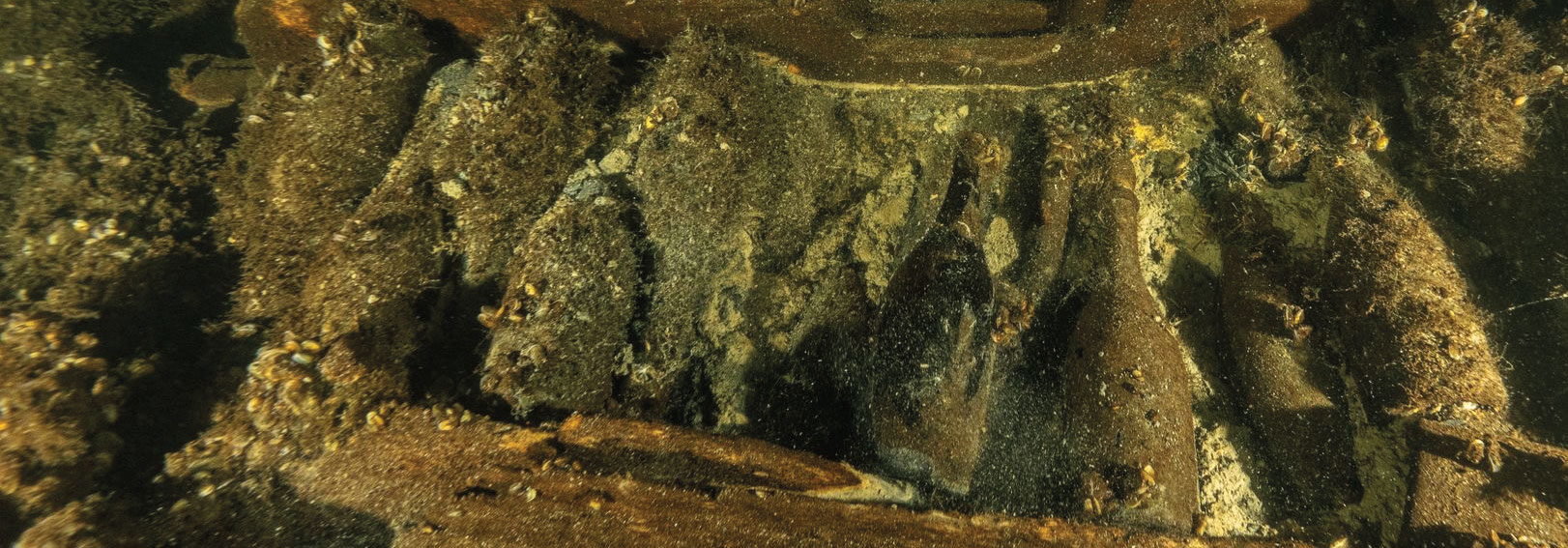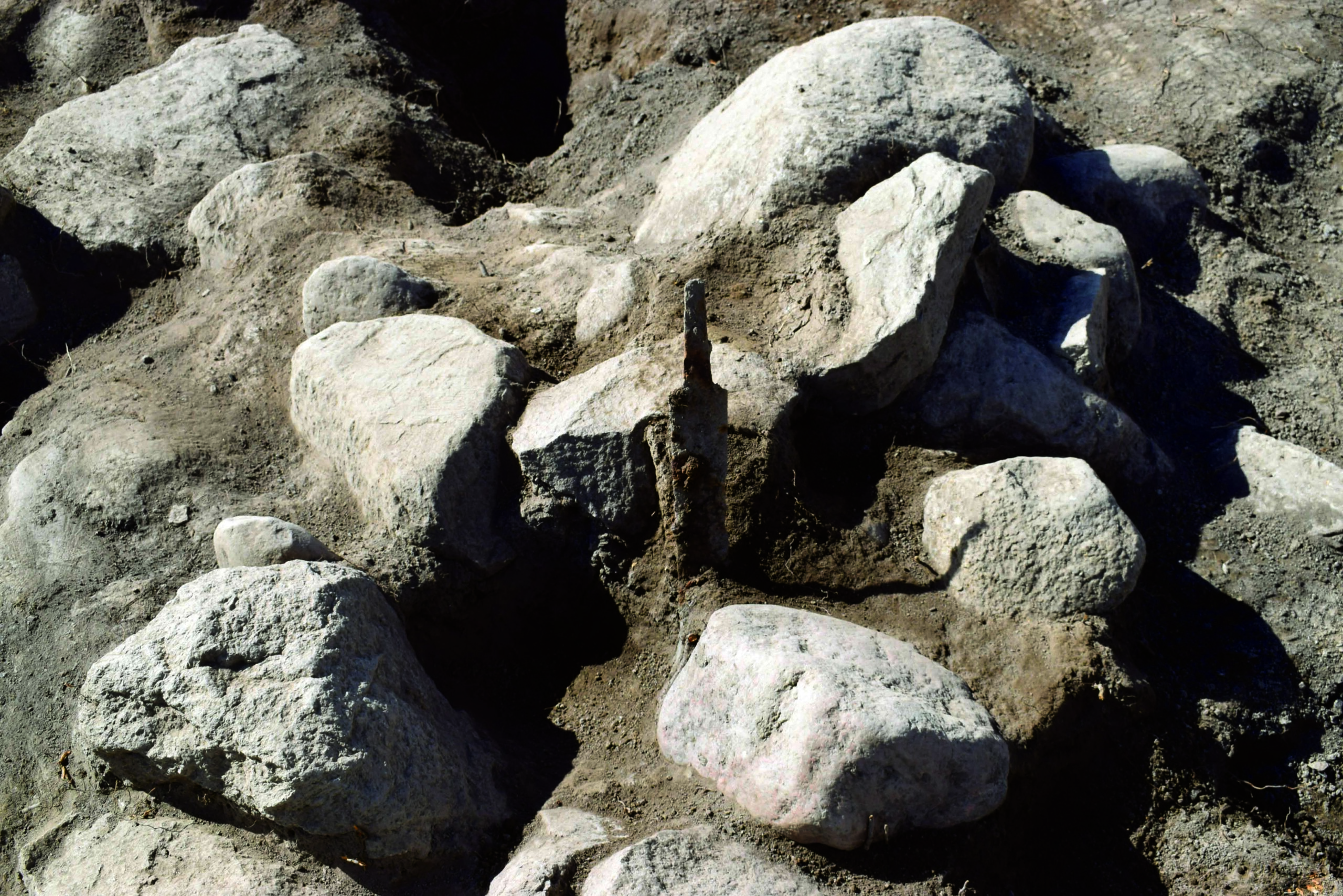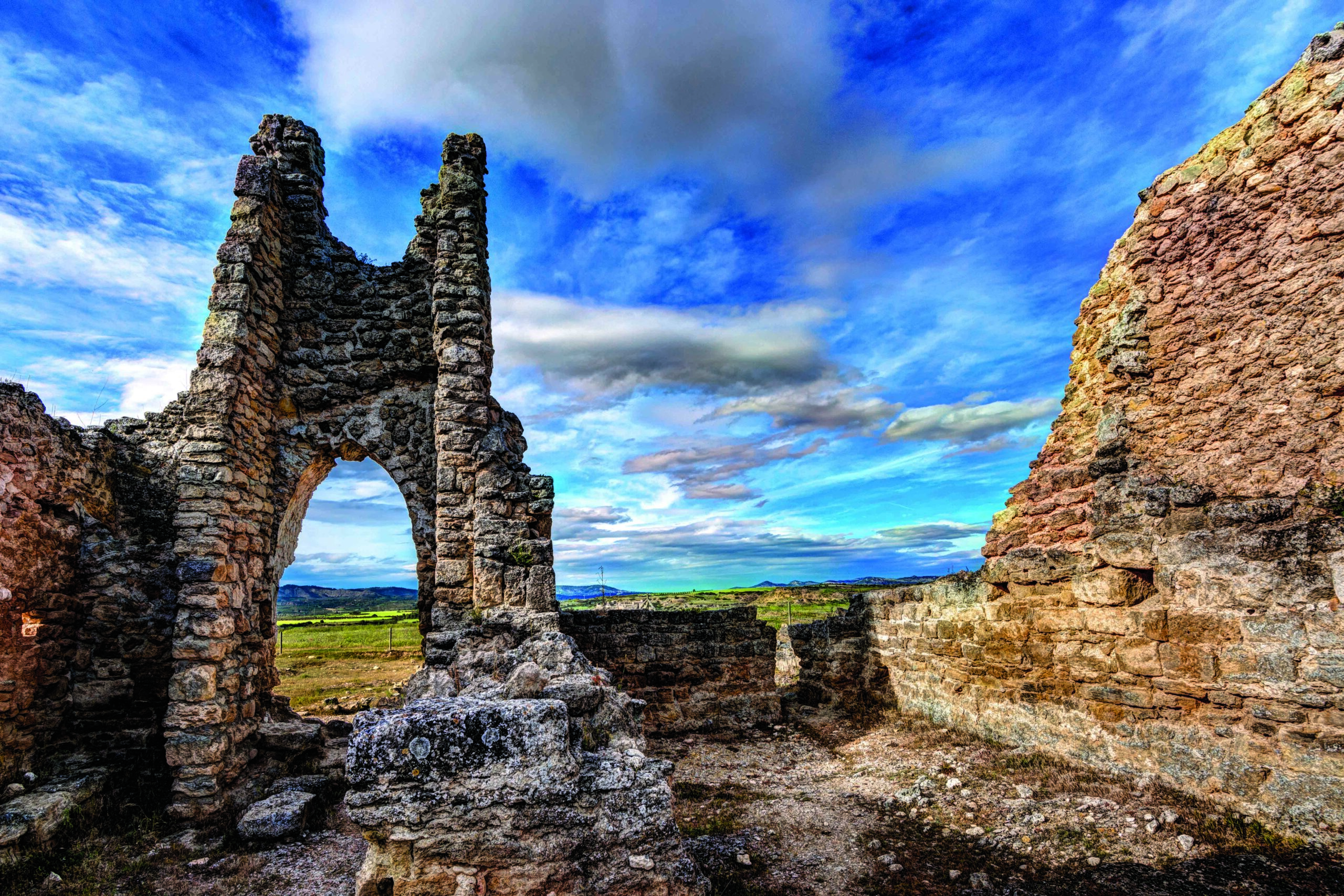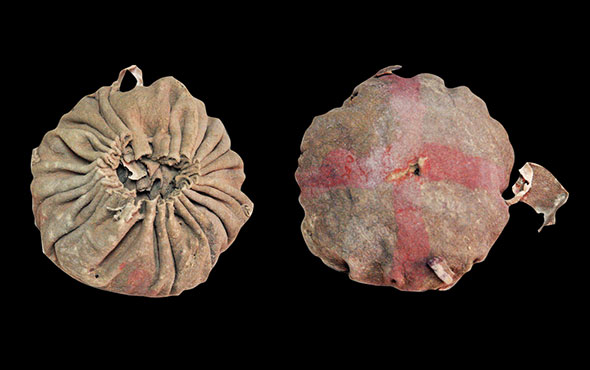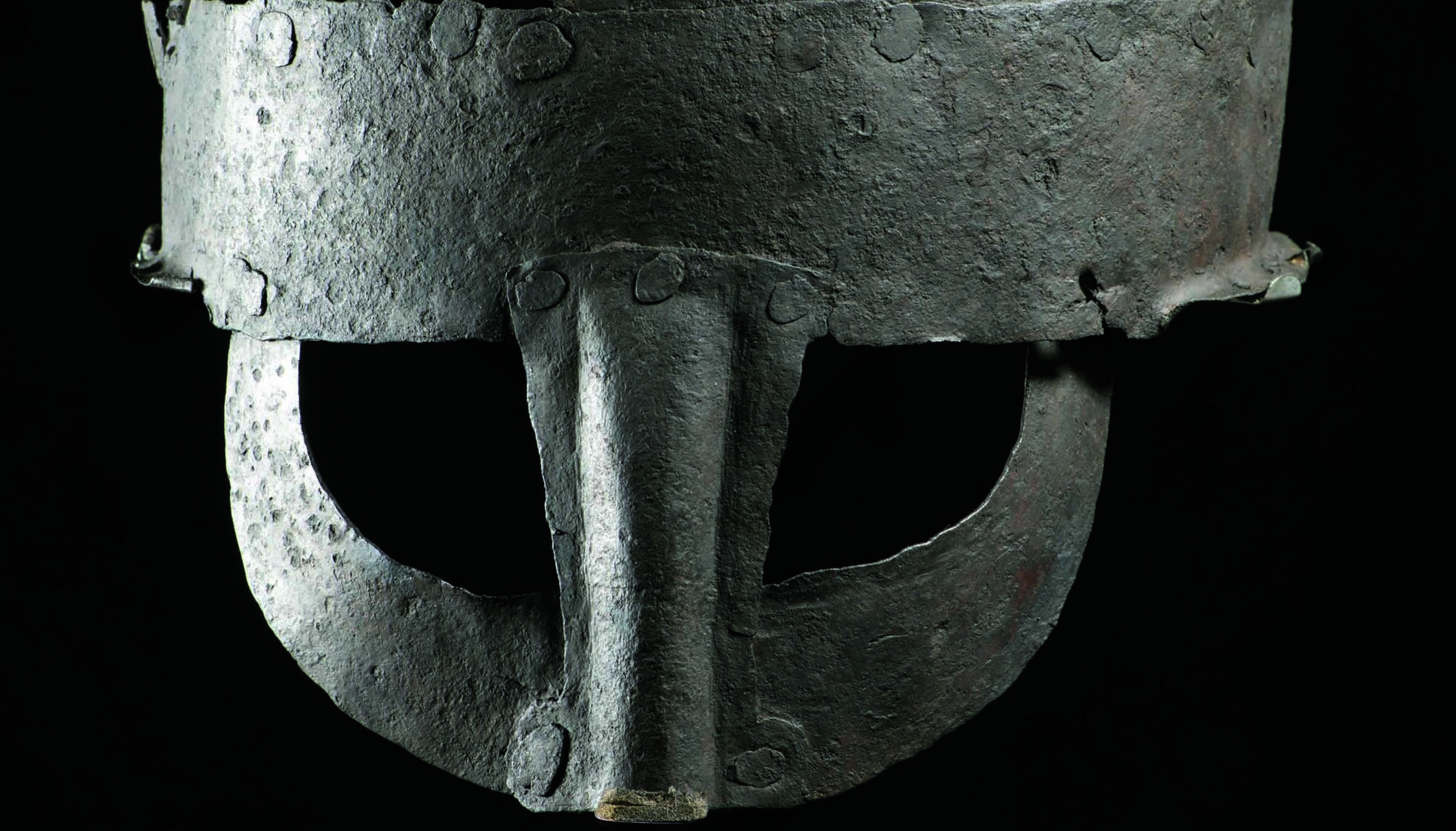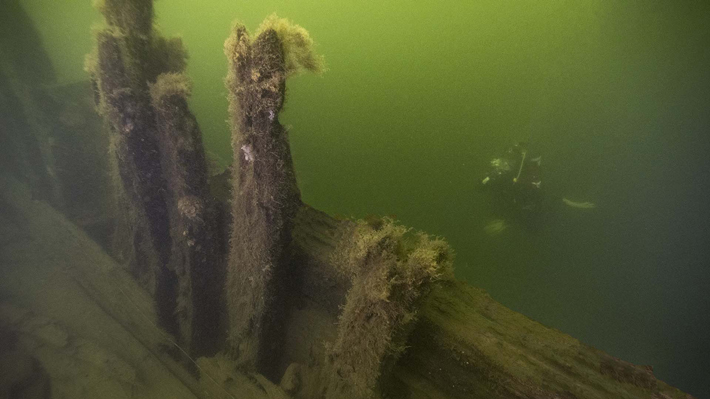
VAXHOLM, SWEDEN—Careful measurements and analysis of wood samples obtained from two large seventeenth-century shipwrecks in a Swedish shipping canal have helped a team of scientists led by Jim Hansson of the Vrak Museum of Wrecks to identify them, according to an Ars Technica report. At first, the researchers thought that the ships might have been constructed by King Gustav II Adolf shortly after his top-heavy, unwieldy warship Vasa sank on its first voyage in 1628, killing everyone aboard. The sister ships Äpplet, Kronan, and Scepter were also designed to carry large numbers of heavy cannon, and were eventually scuttled in the late seventeenth century to help control access to Stockholm from the sea. Hansson said radiocarbon dating of wood samples collected by his team showed the trees were likely felled during the winter of 1646 and 1647, making the vessels too young to be Vasa’s sister ships. Additional research showed that wood from one ship came from northern Germany, and the other from eastern Sweden, which also eliminated them as Vasa’s sisters. Digital reconstructions of the vessels from the survey data and archival research suggest the ships are the Apollo, built in Germany in 1648, and the Maria, built in Stockholm. Both ships were scuttled at Vaxholm in 1677. For more on Vasa, go to "History's 10 Greatest Wrecks...Mary Rose and Vasa."



